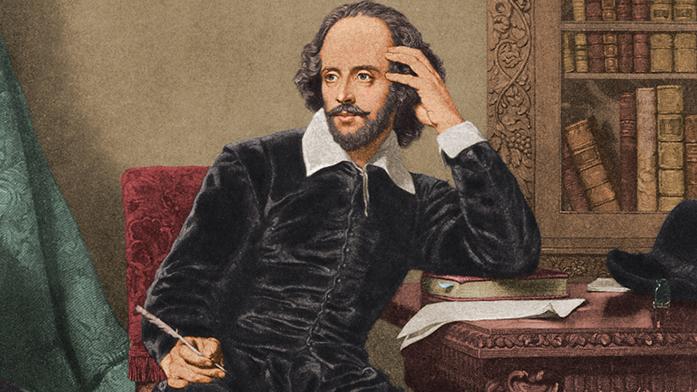Tessa Solomon
tessa-solomon@uiowa
Four hundred years after William Shakespeare’s death, Iowa City residents can receive a new glimpse into the master playwright’s life and legacy.
Running Aug. 29 through Sept. 25, the exhibit First Folio, The Book that Gave Us Shakespeare will be on display in the Main Library Gallery as Iowa’s stop on the nationwide tour.
The First Folio, originally published in 1623, comprises 36 first-edition copies of Shakespeare’s plays compiled by his contemporaries. Of the 233 known copies of the first edition that exist in the world, the Folger Shakespeare Library, located in Washington, D.C., picked 18 for the national circuit.
Opening any First Folio prefatory pages reveals Martin Droeshout’s now iconic portrait of Shakespeare — sweeping forehead, penetrating eyes, quizzical tilt of the mouth. While Shakespeare contemporary Ben Jonson, in a dedicatory poem at the beginning of the Folio, implores the public to “Look not on [Shakespeare’s] picture but on his book,” it could perhaps, in retrospect, be seen that the memory of Shakespeare the man and the memory of his literary corpus have been effectively synthesized, establishing an as-yet unforeseen form of canonization.
While Shakespeare’s contemporaries intended for the Folio to serve as posthumous veneration of the work of a friend and colleague, First Folio would later, also, be similarly revered for the history imbued in its binding and preservation of 18 of the most treasured texts in literature that had not yet been published, including The Tempest, Macbeth, and Julius Caesar.
Seeing a first edition of a writer’s work, Gregory Prickman, the head of Special Collections and First Folio exhibit curator, said, helps to transport people back in time, closer to when that text was created.
“It allows you to see not what the words are, but how the words appeared to the first people reading those works,” Prickman said.
He was a member of the team responsible for UI’s selection as the Iowa host site for the tour. The application was competitive, but Iowa City’s rich literary history, the UI’s prominent Center for the Book, and the expertise of First Folio scholar and UI Associate Professor Adam Hooks proved convincing to the Folger.
With the First Folio secured, the last few weeks have seen the Main Library’s new gallery space transformed into a trip through literary history.
“We wanted to tell different stories of Shakespeare based on the resources we have here,” Hooks said. “To show the different forms that he has taken in print, the importance of those forms, how they complement and complicate the stories that we tell about the First Folio.”
The exhibit The Books That Made Shakespeare will remain after the First Folio departs for its next tour stop, at which time the community will be able to shift attention away from the scene-stealing document itself and instead explore the Folio’s textual peers, influences, and byproducts.
The wall-hugging two main sections and sidebars include an Elizabethan treatise on witchcraft, clever forgeries spurred by Shakespeare’s fame, and battered bindings still bearing centuries-old ink.
“We think of a valuable Shakespeare book as this pristine artifact, and quite likely the Folio will look like that, but that’s not how it was intended to be used, nor was it intended to look like a museum piece,” Hooks said.
The exhibit curators stress that although today the book stands firmly in the Western canon alongside such texts as the Gutenberg Bible, it began as just another manuscript waiting for publication.
Each of the 18 first-edition Folios the Folger distributed for the tour bears a singular history. The distribution among the host locations is far from arbitrary, and curators aren’t informed about which Folio has been selected for their exhibit until it arrives — they could receive a copy in pristine condition or one well-worn from centuries of transportation, damage, and consequent attempts at restoration.
The narrative referred to by the exhibit’s artifacts helps contextualize the path the Shakespeare tome took to its current revered — even cult — status in global scholarship. As the first printed collection of Shakespeare’s plays, it is regarded as the closest thing we have to the original or “true” versions of the plays.
“An obsession of a lot of critics and scholars has been figuring out what Shakespeare did write,” UI English Associate Professor Blaine Greteman said. “I think the more interesting thing is not what did Shakespeare write but what this process of co-creation tells us about how Shakespeare and his contemporaries actually worked.”
The First Folio will be displayed center stage in the exhibit room, its pedestal resembling more an altar than podium, but impressions are misleading.
“I hope people don’t go and see this book behind glass and think, ‘Oh, there’s Shakespeare, the holy author,’ ” Greteman said. “One of the things this highlights is that Shakespeare and his work have always been something that are being made by the readers and the students of those works.”



